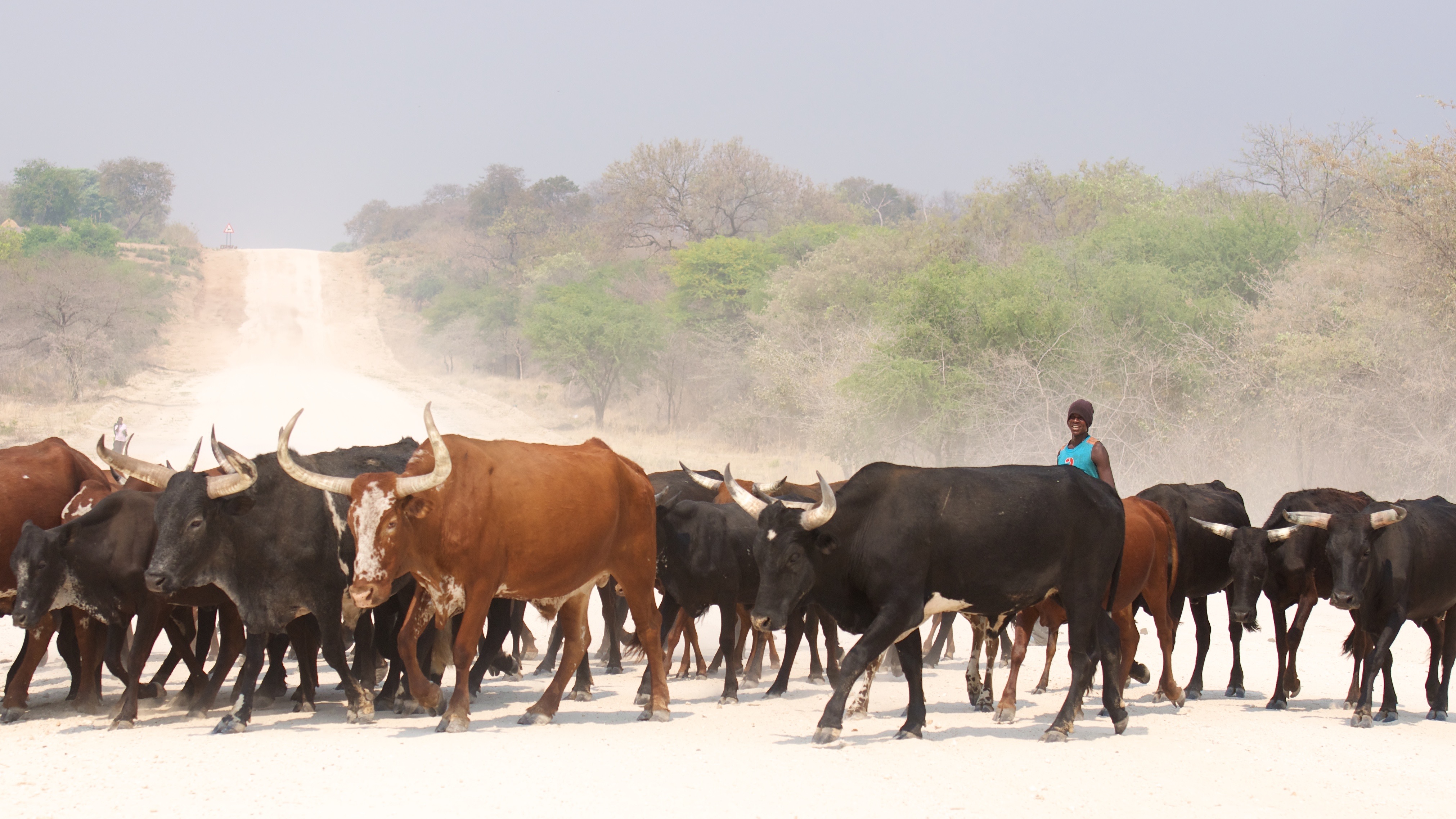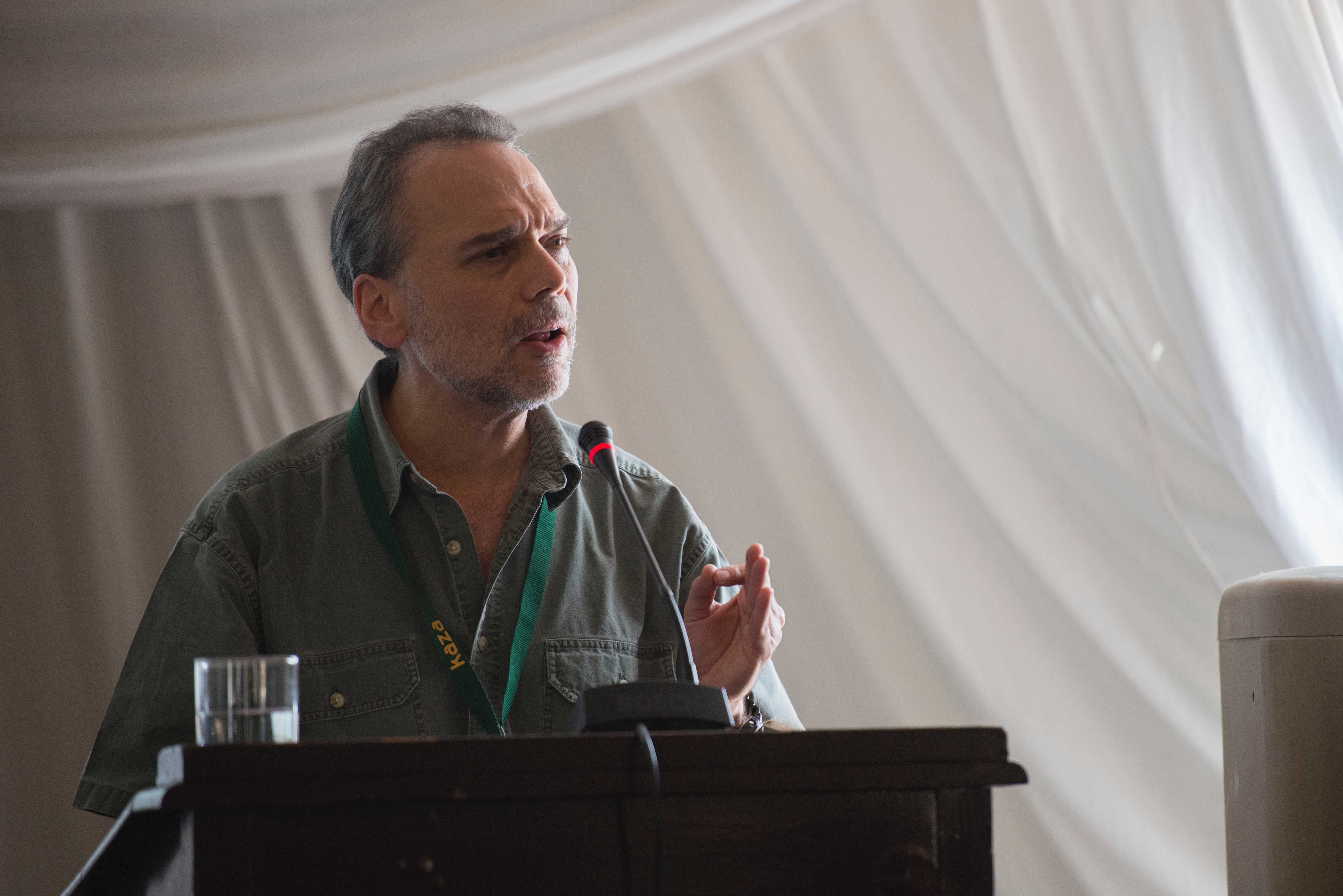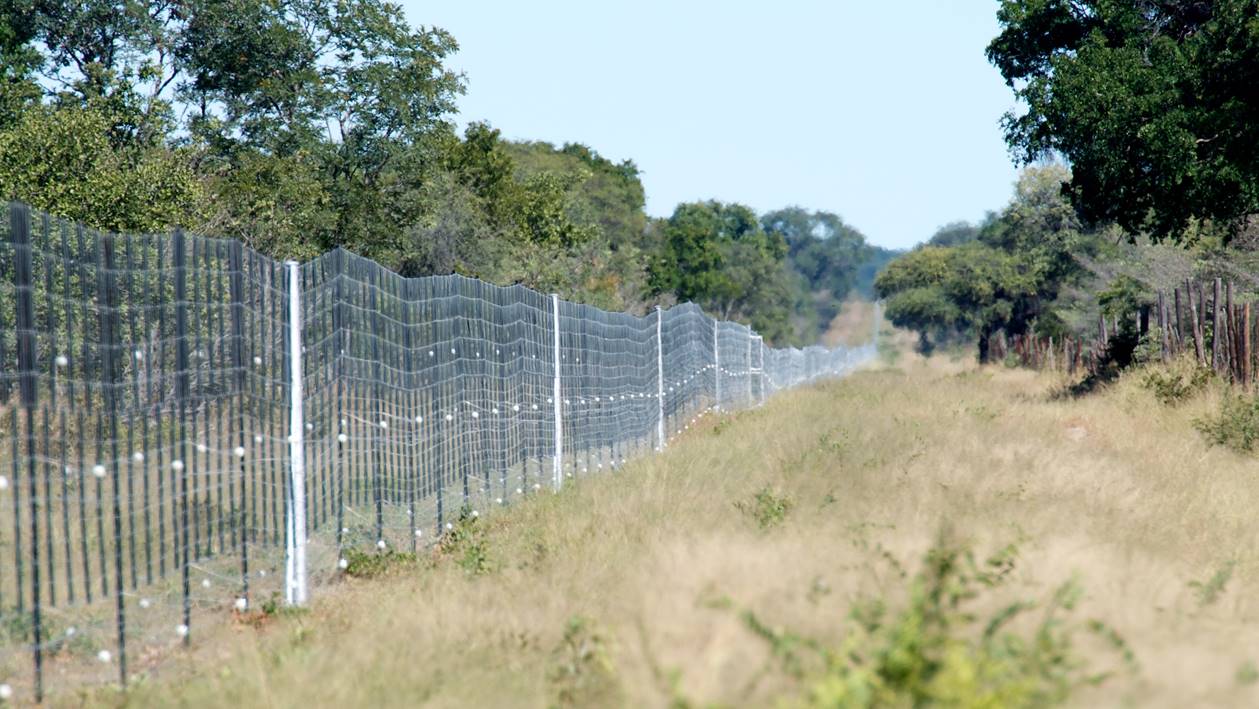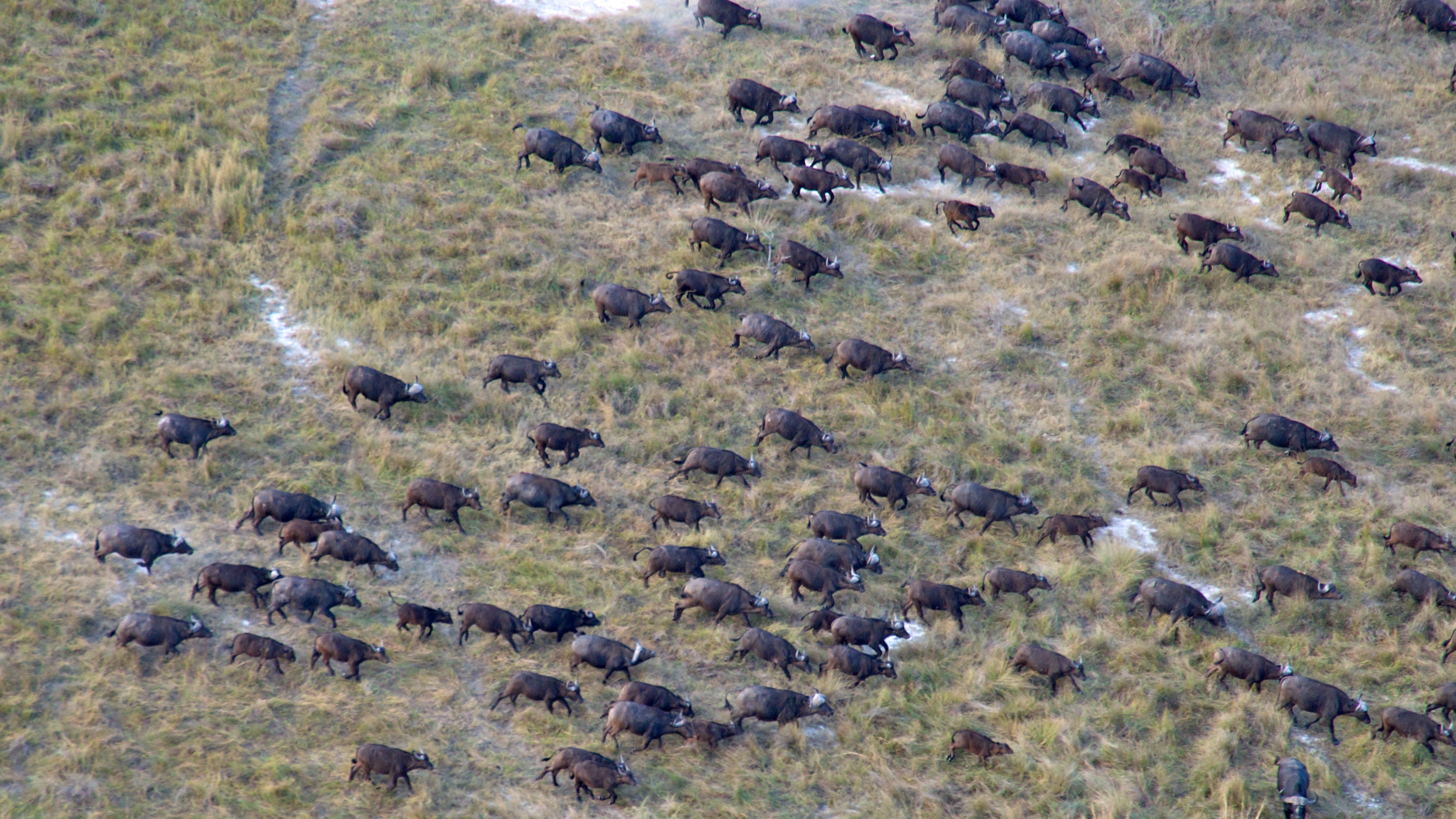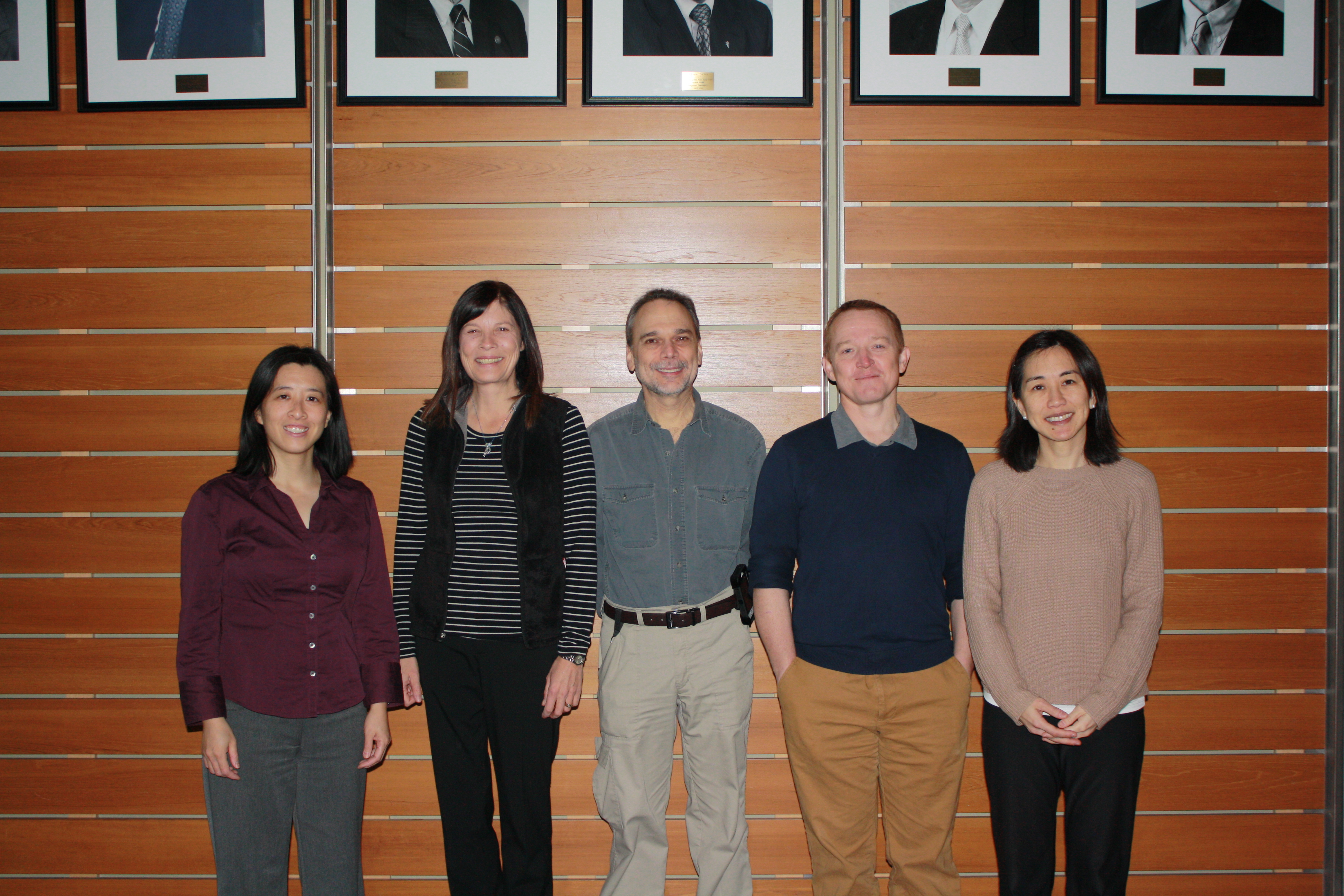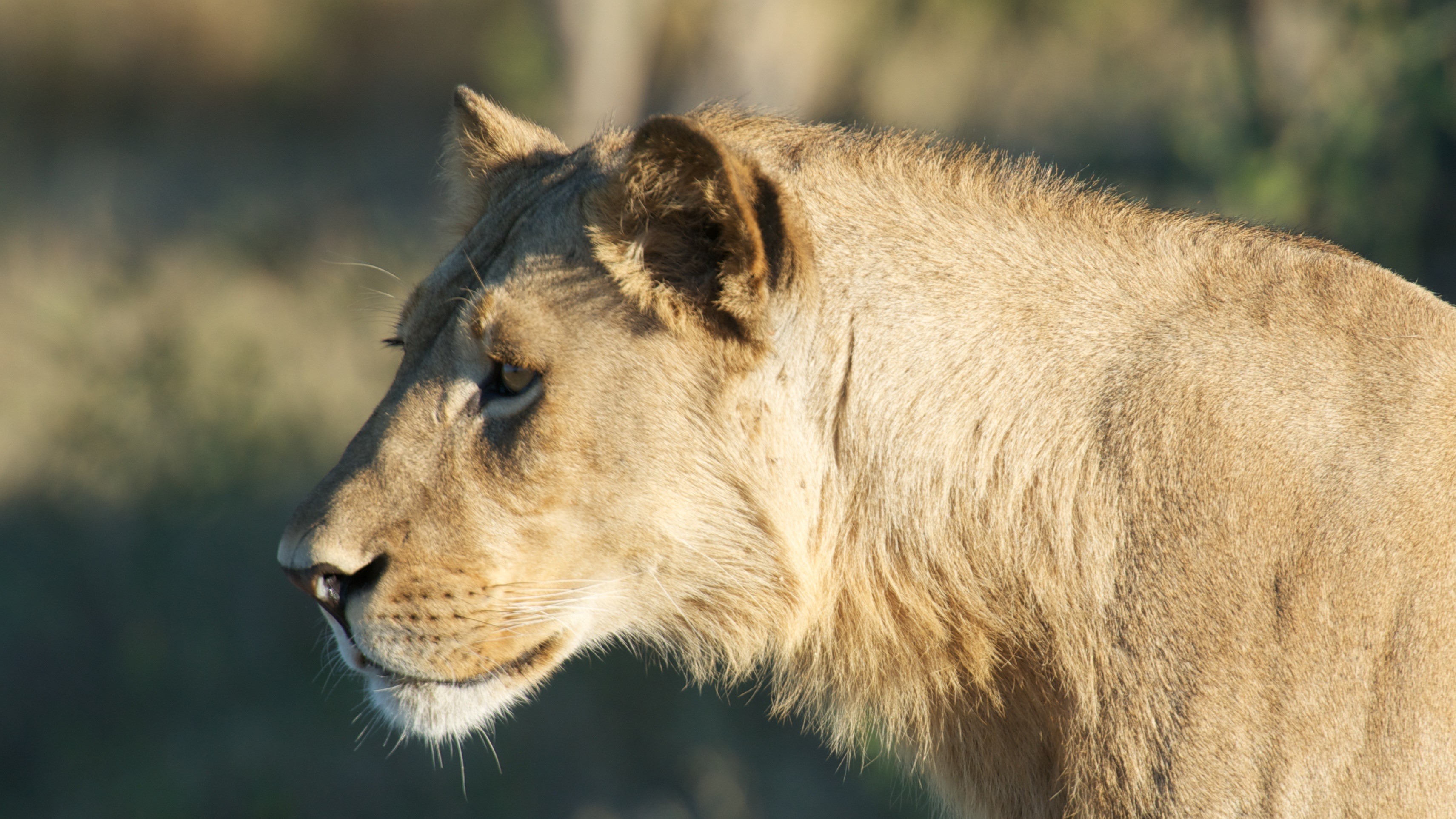Wildlife-Friendly Beef: “Cattlyzing” Conservation in Southern Africa
By Erin Nicklow, PhD candidate in Molecular Medicine
For generations, international trade practices have dictated that rural southern Africans cannot protect nearby wildlife and, at the same time, farm cattle because of animal disease concerns. If they wanted to export their beef, their choices have been stark: either get rid of wildlife like buffalo, or put up environmentally damaging veterinary cordon fences. These fences cut-off migratory pathways that wildlife depend on to access grazing and fresh water during different parts of the year.
What should rural farmers choose when trying to lift themselves and their communities out of poverty: protect the wildlife and pursue opportunities related to ecotourism and trophy hunting, or turn their backs on conservation and sell their cattle into the beef export market? The truth is that there is a win-win solution.
A team of CVM researchers led by Jay Hyman Professor of Wildlife Health & Health Policy, Dr. Steve Osofsky (DVM ’89, Department of Population Medicine and Diagnostic Sciences) has received a grant to implement a new approach to processing beef so that it is safe for human consumption and international trade, but does not require the use of the veterinary cordon fencing that disrupts wildlife migration in southern Africa. The eighteen-month study is funded by the Atkinson Center for a Sustainable Future (ASCF), and supplements Dr. Osofsky’s support from The Rockefeller Foundation.
Vast fences are currently used to keep southern African cattle free from contact with local wildlife, which can harbor foot and mouth disease. The viruses that cause foot and mouth disease (FMD) do not make people sick (FMD is unrelated to the often-confused hand-foot-and-mouth disease), but it does infect livestock like cows, pigs, goats, and sheep. The foot and mouth viruses are endemic to regions of Africa, with African buffalo being the only wildlife species known to naturally harbor them, although the buffalo don’t actually get sick.
Current international regulations to manage animal diseases like foot and mouth are set by the World Animal Health Organization (OIE). These rules, enacted more than a half century ago, require that livestock products can only be traded if the animals they are sourced from are reared in areas which are completely free of foot and mouth disease. As a result of this rigid policy, which penalizes livestock owners who share land with wildlife, thousands of miles of fencing have been constructed throughout southern Africa since the late 1950s. The goal has been to keep cattle free from contact with wildlife which could harbor foot and mouth disease viruses.
One of the impacted regions is the Kavango Zambezi Transfrontier Conservation Area, known as ‘KAZA’ for short. KAZA is a vast area about the same size as the northeastern U.S. that was formed through an international treaty among Angola, Botswana, Namibia, Zambia, and Zimbabwe. KAZA is where Dr. Osofsky’s work with southern African colleagues is being conducted. It is Africa’s largest wildlife conservation landscape, and is home to the world’s largest remaining population of African elephants – approximately 250,000, likely more than half of all the elephants left in Africa.
Veterinary fences in and around KAZA constrain the movements of elephants and other wildlife. This has many harmful effects. “The long-term viability of most of southern Africa’s extraordinary wildlife, like the elephants in KAZA, depends on reestablishing the landscape connectivity these species have evolved with. To maintain genetic diversity, in order to be able to maintain resilience in the face of challenges like climate change or surges in poaching or disease outbreaks, wildlife cannot increasingly be confined to pockets of habitat that make it easier for the last dominoes to be tipped towards extinction,” says Professor Osofsky.
Today, the southern Africa region’s economy is largely driven by wildlife- and nature-based activities, such as tourism and hunting. These activities are lucrative and exceed the economic contributions of livestock agriculture, forestry and fisheries combined. Even so, livestock farming remains an important foundation of traditional livelihoods and culture, as well as a source of foreign exchange for beef exporting countries. The creation of a transfrontier conservation area like KAZA increases the likelihood that domestic and wild animals will come into ever more intimate contact. This reinforces the need for better scientific knowledge and planning to preclude consequences that can be detrimental on one or both sides of the proverbial fence.
Historical approaches to the control of foot and mouth disease are incompatible with the vision of vast conservation landscapes with fewer major fences. This represents one of the key challenges to conservation success. “If this work is successful, the door is open to a truly win-win opportunity for both livestock farmers and for tourism and related industries involved with transfrontier conservation areas” notes Professor Osofsky. “If livestock agriculture is no longer solely dependent on veterinary fencing to deal with foot and mouth disease, then KAZA’s vision for the restoration of major movement corridors for the region’s spectacular wildlife, including the world’s largest remaining population of elephants, indeed has a chance of being realized.”
Dr. Osofsky’s current work will focus on a region of KAZA in northern Botswana, in partnership with government officials and farming communities. Because of recent changes in international animal disease policy in part facilitated by Dr. Osofsky and partners in the Southern African Development Community (SADC), this area is now well-positioned to implement a beef value chain-focused approach known as commodity-based trade. In this new approach, cattle are managed in accordance with updated official foot and mouth disease control guidelines, which include vaccination protocols, veterinary inspections, and quarantine for 30 days before slaughter. The beef can then be considered safe for trade, provided the meat is deboned, deglanded, and properly aged to allow the pH to drop (which ensures that any foot and mouth virus, if present, cannot survive).
Dr. Osofsky and the Animal & Human Health for the Environment And Development (AHEAD) program he founded more than a decade ago have worked for years with southern African partners to develop this new approach, and to help get it accepted by the World Organization for Animal Health. The wildlife-friendly beef pilot project now underway focuses on providing practical technical assistance to local farmers, meat processors, and government departments. The AHEAD program has also been working on a related study on market opportunities for beef produced in this manner, with support from the World Wildlife Fund, another stakeholder working to ensure that transboundary conservation in the region can be economically and socioculturally viable.
This type of international work requires the expertise of many individuals, including southern African animal disease experts, governmental partners, conservation scientists, farmers, and colleagues from the private sector. From Cornell, the project team includes Professor Randy Worobo, Professor of Food Microbiology in CALS’ Department of Food Science. Professor Worobo brings expertise in food safety management and he has trained more than 8,000 individuals at Cornell and around the world. Also on the team is Shirley Atkinson, Dr. Osofsky’s staff lead on this work, Atkinson Center Fellow, and Assistant Director for Wildlife Health & Health Policy, who originally hails from southern Africa. “We are obviously dealing with a complex challenge, one that involves many sectors and interests. The breadth of the assembled team is a recognition that no one of us has all of the answers to tackle a problem that had been considered intractable for decades,” notes Dr. Osofsky.
What's at Stake?
With successful implementation of commodity-based trade of beef in southern Africa, there is a real prospect for improved livelihood options for millions of people, secured transboundary landscapes, and long-term protection for many important wildlife species in the region. Southern African governments that have agreed to work together to create transfrontier conservation areas will only continue to invest in this complex type of effort if the economics behind them make sound development sense. “Much of our policy focus relates to that same objective, as we believe there will be no sustainable conservation success without concomitant diversification and improvements of local incomes,” says Professor Osofsky. Dr. Osofsky also makes the point that KAZA is only one of the conservation areas impacted by this challenge. “If you add-up all of the land area that’s part of an existing or planned transfrontier conservation area in southern Africa, the total comes to about the same surface area as the states of New York, California, and Texas combined – the southern Africans are essentially leading one of the boldest and most important experiments in terrestrial conservation on the planet.”
Similar challenges related to foot and mouth disease exist around the world – from Tanzania in East Africa to Mongolia in Central Asia. Just like in southern Africa, commodity-based trade could be of great utility in these countries as well. It’s even been suggested that the U.S. needs to take a look at this work, as if foot and mouth disease ever gets reintroduced into the U.S., we likely will need to be much more creative than strictly relying on massive slaughter, carcass disposal and vaccination campaigns. We need to try thinking “outside the ox,” as Dr. Osofsky says, and recognize that there may be other ways to minimize economic impacts on our own agricultural sector in the face of such an animal disease.
More about Dr. Osofsky and this work:
Cornell Research profile of Dr. Osofsky’s southern Africa program
Recent talk show launch of Wildlife Health Cornell
Beauty and the Beef film on Dr. Osofsky’s work in southern Africa at the wildlife / livestock interface
Selected Publications:
Thomson, G. R., Penrith, M.-L., Atkinson, M. W., Atkinson, S. J., Cassidy, D., and S. A. Osofsky. 2013. “Balancing Livestock Production and Wildlife Conservation in and around Southern Africa’s Transfrontier Conservation Areas,” Transboundary and Emerging Diseases, vol. 60 (6): 492–506. http://dx.doi.org/10.1111/tbed.12175
Thomson, G. R., Penrith, M.-L., Atkinson, M. W., Thalwitzer, S., Mancuso, A., Atkinson, S. J., and S. A. Osofsky. 2013. “International Trade Standards for Commodities and Products Derived from Animals: The Need for a System that Integrates Food Safety and Animal Disease Risk Management,” Transboundary and Emerging Diseases, vol. 60 (6): 507–515. http://dx.doi.org/10.1111/tbed.12164
Cumming, D. H. M., Osofsky, S. A., Atkinson, S. J., and M. W. Atkinson. 2015. “Beyond Fences: Wildlife, Livestock and Land Use in Southern Africa,” pp. 243-257, in Zinsstag, J., Schelling, E., Waltner-Toews, D., Whittaker, M., and M. Tanner (eds.) One Health: The Theory and Practice of Integrated Health Approaches. C.A.B. International, Oxfordshire, United Kingdom.

